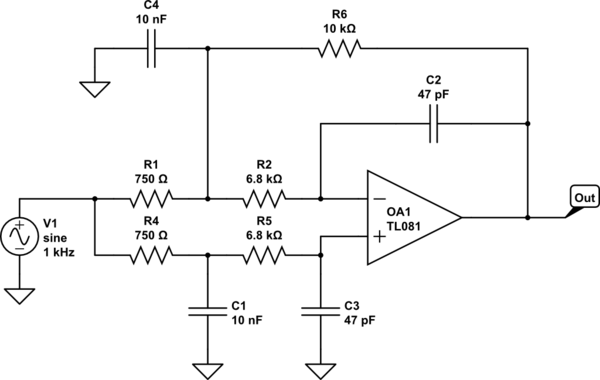Is this a practical filter configuration?
A standard 3rd order filter with a gain of unity that uses an op-amp would use 3 resistors and 3 capacitors. Your circuit uses 5 resistors and 4 capacitors. This makes it less practical than the standard solution.
Maybe if you can show it has some advantage over a standard Sallen-key op-amp filter it's worth pursuing.
This circuit does not invert phase. Why does it work like that?
It doesn't invert phase because there is more circuit gain in the non-inverting path than there is in the inverting path (due to R6) but, as frequency passes the cut-off point, R6 becomes gradually less dominant with respect to the lowering impedances of C4 and C2 and, can be ignored.
This then leaves two gain paths (one inverting and one non-inverting) that gradually becomes closure in magnitude and eventually become equal in magnitude at very high frequencies thus, overall circuit gain falls to zero (absolute terms).




